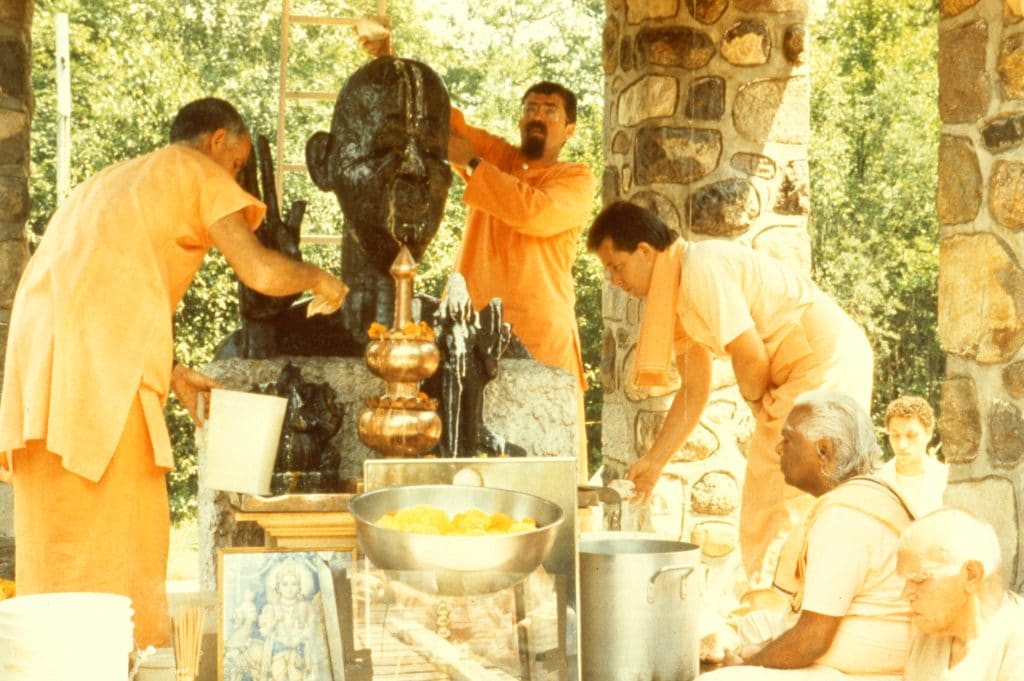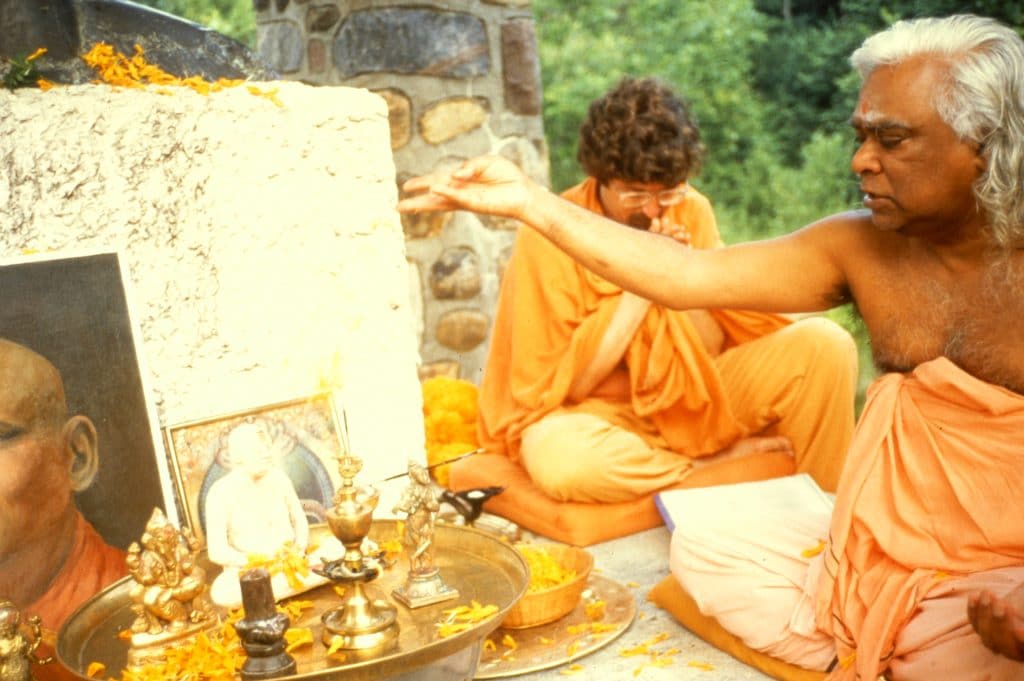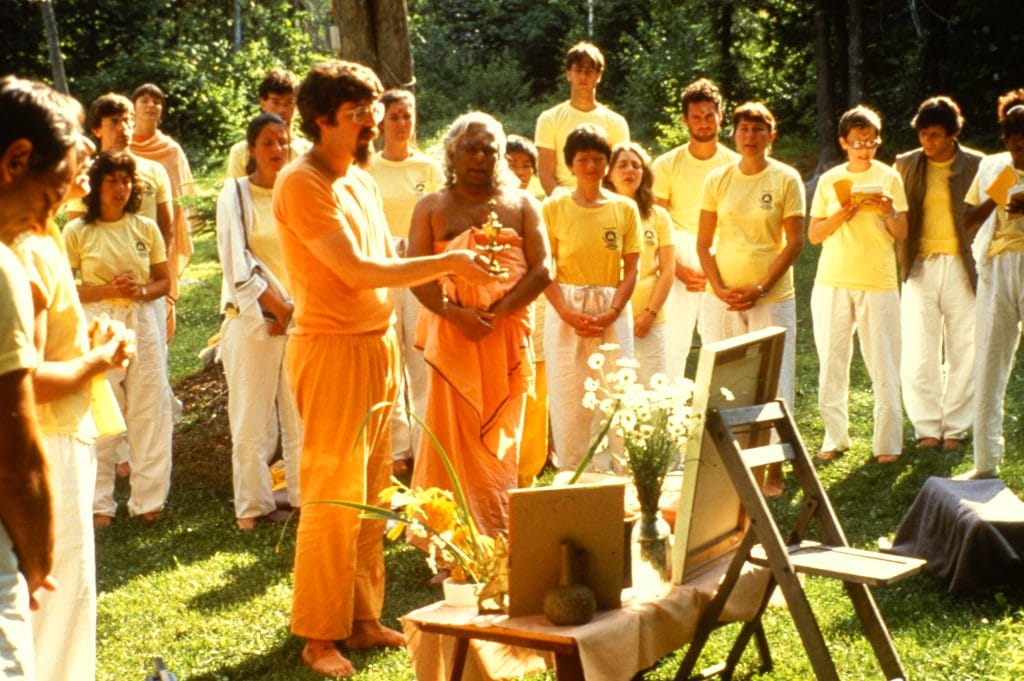Sivananda Bahamas Blog
Expand Your Horizons …
Our Blog
Bhakti Yoga: The Surest Way to God, Part 2
By: Swami Swaroopananda
To read part 1 of Bhakti Yoga: The Surest Way to God, click here.
How to Love Unconditionally
Bhakti is unconditional love. People ask how can we love unconditionally? The answer is, we first need to love conditionally. We begin with selfish egoistic human love and gradually this love extinguishes our ego and matures into unconditional love. As we grow from selfish love to selfless love, as the mind and the heart become purer, our love becomes unconditional. Unconditional love does not expect anything in return; it exists only for the sake of the beloved. In the beginning, it manifests as selfless service to our fellow beings. From service to our fellow beings, we develop love for our fellow beings and at some point, this love turns into Bhakti - an inconceivable love towards God.
Thus, Karma Yoga is the best method to attain unconditional love. Loving our fellow beings leads to love of God because God is all. In the 11 th chapter of the Bhagavad Gita, Arjuna sees All in the One. The One includes everyone - not only the good and the beautiful but also the terrible and the most despicable. Thus, Bhakti, which is love of God, is directed towards the All; it embraces all. As the heart purifies through selfless service, the heart grows and grows until it can contain the Lord, until it can contain the All.
To love unconditionally means not to put conditions on our love. To say, ‘I will love you only if you love me’ does not make sense. It is like saying ‘I will breathe only if you breathe’. We do not put conditions on our breathing, we simply breathe. But Love is more essential than breathing. Love is the foundation of our existence. When we understand this, we love unconditionally.

Bhakti Yoga Sadhana
There are nine modes in the ladder of Bhakti Yoga. These are nine practices that are mentioned in the Puranas and prescribe the sadhana of Bhakti Yoga from the simple to the more difficult practiced. Those nine modes are Sravanam (hearing of God's Lilas and stories), Kirtanam (singing of His glories), Smaranam (remembrance of His Name and presence), Padasevanam (service of His feet), Archanam (worship of God), Vandanam (prostration to the Lord), Dasyam (cultivating the Bhava of a servant with God), Sakhyam (cultivation of the friend-Bhava) and Atmanivedanam (complete surrender of the self).
The first mode, Sravanam, is listening to stories about God. Hearing stories about the beloved invokes love in the heart. If you hear stories about Swami Vishnudevananda, eventually you develop devotion towards Swami Vishnudevananda. If you hear stories about Lord Krishna, devotion towards Lord Krishna is invoked. Sravanam is the practice of hearing stories that are told by bhaktas, by devotees of God. The transmission of Bhakti is direct. It happens from the heart of the Bhakta to the heart of the student. Sravanam is to sit at the feet of bhaktas, saints, and devotees of God and listen to their stories of the Lord. This invokes Bhakti within the heart.
The second mode of Bhakti Yoga is Kirtanam - singing the divine names and glories. Kirtan is a very powerful devotional practice. Everyone loves music and chanting, it is universal, and it penetrates places where the intellect cannot reach. It penetrates the deepest layers of the subconscious mind and takes the aspirant to the Innermost Reality or the Self. Therefore, since time immemorial Kirtan has been one of the most important spiritual practices.
The third mode of Bhakti Yoga is Smaranam, constant remembrance of God. One of the best ways to practice Smaranam is Japa – repetition of the mantra or God’s name. By practicing japa, the mind of the practitioner becomes one with the mantra, which according to the yogic scriptures, is nothing but God Himself. God and His name are one and the same. A mantra is a powerful divine energy in a sound structure. It causes the mind to unite with God, with the Ultimate Reality that resides within our heart. One can attain Self-realization through the practice of japa alone.
According to Swami Sivananda, while doing japa, the practitioner should also practice dhyana or meditation on the meaning of the mantra, which is the Lord Himself. For example, if you meditate on the mantra of Lord Krishna, you should also meditate on His form and divine qualities. Japa should be practiced with devotion, but it is also a method to cultivate devotion. When you love a person and you think about their name, this brings to mind the memory of that person and that memory awakens love. Similarly, repeating God’s name leads to the remembrance of God and that remembrance awakens Bhakti or love of God, which in turn leads to unity with God.
In his book Bliss Divine, Swami Sivananda writes: “live in love, breathe in love, sing in love… die in love”. What does it mean to “die in love”? It means that in the end, you are totally consumed by that love and nothing is left from you, only the beloved exists. Love is compared to fire. When you throw something into the fire, it is consumed by the fire and nothing remains but the fire. Similarly, when you practice the yoga of love, at the end nothing remains but love, nothing remains but bliss.
Even if the repetition of the mantra is mechanical in the beginning, it will eventually generate devotion. By repeating the mantra, you release this divine power and once it is released, it manifests devotion. Then there is Bhava, a loving relationship between the one that repeats the Divine Name and the one that carries the Divine name. Japa is a very powerful method because God and His name are one. When you repeat His name, even if you are not aware of it, you are instantaneously in His presence.
Constant repetition of the mantra leads to darshan - a direct vision of the Divine. You will experience the Divine within your heart. You will also experience Him outside of you. Then your life will be changed for the better, forever. ‘As you think so you become’ - if you think about God and repeat His name, you become one with God. Chanting the Divine Name is said to be the easiest way to realize God in this Kali Yuga or iron age. Repeating the Divine Name leads to the highest levels of meditation.
The other modes in the ladder of Bhakti Yoga are Padasevanam (service at the Lord’s feet), Archanam (Worship of God), Vandanam (Prostration to the Lord), Dasyam (feeling of being a servant of God), Sakhyam (feeling friendship towards the Lord). At the top of that ladder is Atmanivedanam - total self-surrender to God. Along with these nine modes of Bhakti, there are also five Bhavas or devotional attitudes. Those are Santa Bhava, the peaceful attitude; Dasya Bhava, relating to God as a loving servant to a loving master; Sakhya Bhava, regarding God as your friend, Vatsalya Bhava, regarding God to be your child, and Madhurya Bhava, relating to God as the beloved.

Atmanivedanam: Self-Surrender to God
The highest practice in the ladder of Bhakti Yoga is Atmanivedanam or self-surrender to God. The yogi surrenders completely the self or ego in the ocean of love, which is God. It is compared to a drop of water that touches the ocean and becomes one with the ocean. This is a state of union, of non-duality. The path of love starts with duality and ends with non-duality. When the devotee becomes one with the beloved then he or she are in a state of non-duality within a state of love. The meaning of surrender is to recognize that we are not separate, that nothing exists in isolation, that everything is connected to everything else within a ground of Pure Consciousness. The Universal Pure Consciousness, which I am, is the Reality upon which the universe of names and forms is superimposed. To that Universal Consciousness, to whom we
call God or the Self, I surrender.
God and the Self are one and the same. Swami Sivananda says that God is closer to you than your jugular vein, because He is your own existence. I exist because God is existence, I am conscious because God is consciousness; I am because God is the Self. But God is not limited to me. It is all pervading; it permeates all existence, and all existence is superimposed upon God or the Self. To that God I surrender. Surrender means renouncing the idea that I am a separate,
isolated, disconnected being.
As we meditate like this, eventually Self-surrender comes from within. But the practical way to attain Self-surrender is to practice the four paths of yoga. We need to start with Karma Yoga to purify the heart and the mind. Then we need to practice Bhakti Yoga, which teaches us how to attain Self-surrender, devotion to God and a direct experiential awareness of God. Then we need to learn the system of Raja Yoga, which teaches us the path of meditation and Samadhi and prepares us for the yoga of wisdom. Eventually we need to enter the domain of Jnana Yoga, the yoga of knowledge or wisdom. Yoga is a gradual path that removes impurities from our heart and mind. Once those impurities are removed, we become capable of love, devotion, self-surrender, meditation, reception of knowledge, Self-Realization and ultimately, moksha or spiritual liberation. It is a very systematic, gradual, and time-tested path. Its beauty is that by implementing the teaching, eventually we experience the teaching. Then our doubts are removed, and we develop faith. And faith is a conduit or an avenue towards devotion and ultimately towards Self-surrender.

The Importance of Satsanga
In the Ramayana Lord Rama explains that the most important thing for developing bhakti is Satsanga - being in the company of saints and bhaktas. If you are in the company of fire, you are going to catch fire. Similarly, if you are in the company of bhaktas you are going to experience bhakti. Satsanga means association with Truth or association with those who experience Truth. Saints are in love with the Divine, they are God-intoxicated. They experience the Divine within and without and they see Him in other people, they see their beloved everywhere. Their love is contagious; when you spend time with them, they transmit it to you and you can experience it yourself. If you spend time with people who are immersed in Samadhi, eventually you yourself are going to be immersed in Samadhi.
The nine modes of Bhakti need to be practiced in satsanga – in the presence of Bhaktas or saints. When you are in their company, they will tell you stories about the beloved, not from books but from their direct experience. You will observe their behavior, you will notice how they treat other people, you will feel the Divine Love that radiates from them. It will not take long before you yourself will be convinced of the Reality of God who dwells within your heart.
Om Tat Sat









One thought on “Bhakti Yoga: The Surest Way to God, Part 2”
Joseph Rene Broussard
Thank you. Aum. Aum. Aum.